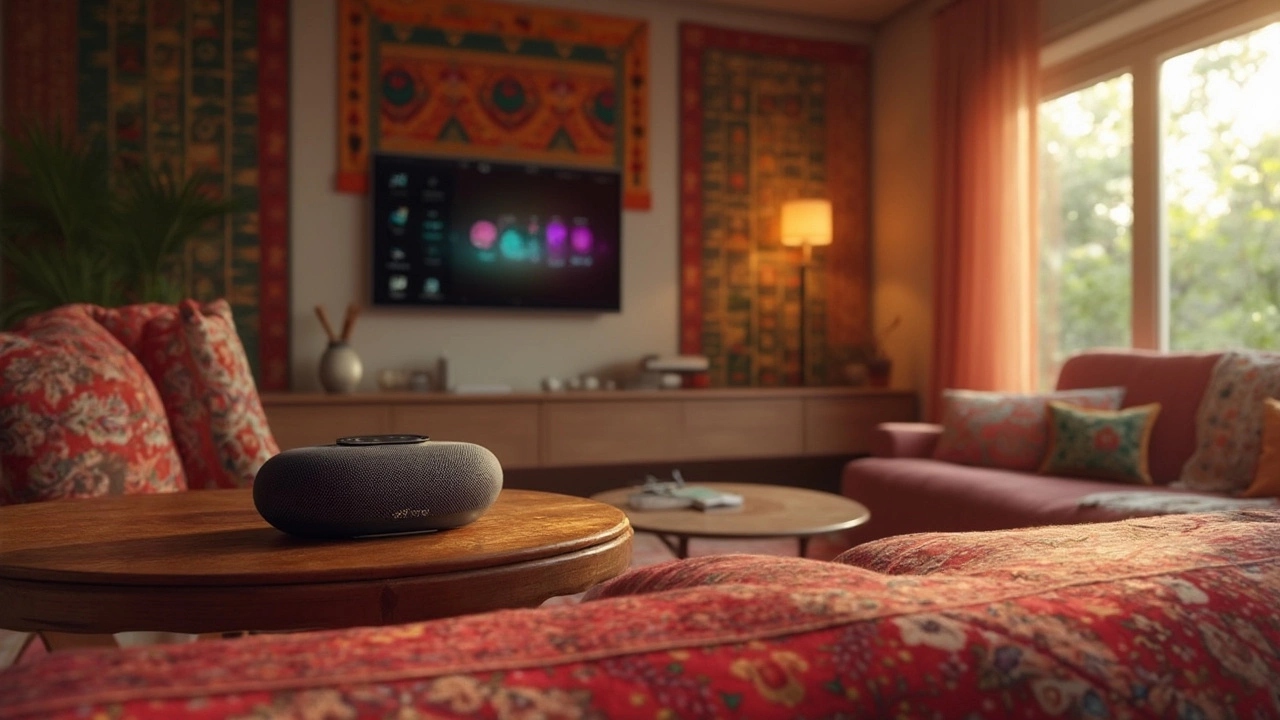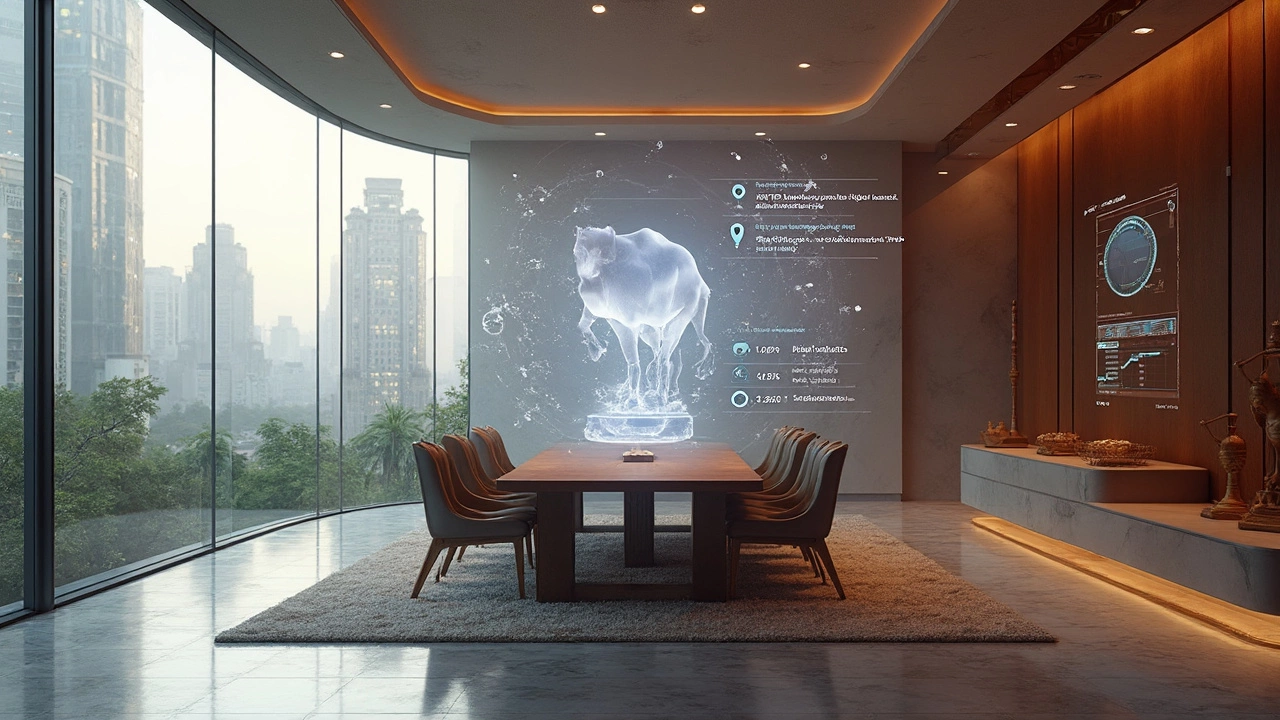
Ever wondered what it feels like to live in a house that adjusts the lights when you walk into a room or locks the doors with a single voice command? Welcome to the world of smart homes. These aren't just fancy tech dreams from sci-fi movies—they're happening right now, and they can make daily life way more convenient.
The backbone of a smart home is smart devices. Think of gadgets like smart thermostats, smart bulbs, security cameras, and smart speakers. They're all about making life easier and linked through what techies call the Internet of Things (IoT). Basically, it's about devices talking to each other over Wi-Fi, creating a seamless living experience that’s simple and neat.
Starting with a smart speaker can be a game-changer—it’s like having a personal assistant that doesn't need coffee breaks. Whether you're asking about the weather, playing music, or managing your calendar, these nifty gadgets bring a world of possibilities with just a few spoken words.
- Understanding Smart Home Basics
- Essential Smart Devices
- Benefits of Home Automation
- Setting Up Your Own Smart Home
- The Future of Smart Living
Understanding Smart Home Basics
If you're just dipping your toes into the world of smart homes, let's start with what a smart home really means. At its core, it’s about automating your home environment using various IoT devices that you can control remotely. These devices include everything from light bulbs and thermostats to security cameras and appliances, all connected via the internet.
Why bother, you ask? Well, imagine managing your home's energy use with ease, improving security, and even saving on your utility bills. A smart thermostat can adjust the heating or cooling based on your schedule, while motion-detecting smart technology can keep an eye on your property when you're not around.
How Do Smart Devices Communicate?
At the heart of this setup is a central hub which might be your smartphone or a dedicated hub device. This acts as the brain, sending your commands to the various smart gadgets around your house. The devices themselves communicate using protocols like Wi-Fi, Bluetooth, or Zigbee. It's like networking all your home gadgets to work together.
- Wi-Fi: Offers wide coverage but can be a bit power-hungry.
- Bluetooth: Great for close proximity tasks and uses less power.
- Zigbee: A mesh network protocol that's energy-efficient and perfect for smart home setups.
Getting Started With Smart Tech
If you're overwhelmed, start simple. A common entry point is a smart speaker. Not only does it play music or answer random trivia for you, but it also controls other devices by voice. Gradually, you can add more gadgets, like smart lights that adjust brightness based on the time of day or smart plugs that turn off devices when not in use.
| Device | Use |
|---|---|
| Smart Thermostat | Energy management |
| Smart Bulbs | Lighting control |
| Security Cameras | Home security |
Each step makes your home smarter and boosts convenience along the way. As you add more elements, you'll start noticing the efficiency and simplicity a smart home truly offers.
Essential Smart Devices
The backbone of any smart home setup is the essential devices that automate daily tasks and enhance your living environment. With many options flooding the market, it’s easy to get overwhelmed. Let's break down the main categories that should be on your radar.
Smart Speakers and Displays
Smart speakers like the Amazon Echo or Google Nest Hub are often the entry point for many into the home automation world. They're not just about playing music; they act as the central command hub for your other gadgets. Whether you're dimming the lights, setting alarms, or getting news updates, these devices listen and learn your preferences over time.
Smart Lighting
No one likes fumbling for light switches. With smart bulbs, like Philips Hue or LIFX, you can adjust brightness and color, all from your phone or via voice command. You can even automate them based on the time of day or your routine. Imagine waking up to a simulated sunrise—magical, right?
Smart Thermostats
Keeping your home comfy without wasting energy is what smart thermostats do best. Think Nest Learning Thermostat or Ecobee. They learn your schedule and preferences and adjust the temperature accordingly, which not only helps you save dollars on your utility bill but also contributes to a greener planet.
Smart Security
Feel safer with smart cameras and doorbells like Ring or Arlo. They offer real-time alerts to your phone, so you know who’s at your door—even when you’re miles away. Some systems even come with sirens or integrate with other security products to keep your home secure.
Smart Appliances
From smart fridges that keep an inventory of your groceries to washing machines you control with an app, smart appliances streamline your household chores, offering control and time savings. While perhaps not immediately essential, they show where tech is heading.
Here's a quick snapshot of some popular devices and their main features:
| Device | Main Feature |
|---|---|
| Amazon Echo | Voice control and smart home hub |
| Nest Thermostat | Energy-saving temperature control |
| Ring Doorbell | Video monitoring and alerts |
By incorporating these devices into your living space, smart technology can drastically enhance convenience and efficiency. These essentials form the foundation of a truly integrated smart home.

Benefits of Home Automation
Imagine this: you’re miles away from home and realize you forgot to turn off the lights. No sweat, just grab your phone, and with a tap, problem solved. One of the biggest perks of home automation is convenience. You can control everything—from lighting to locks—without being physically present.
Saving Energy and Money
Smart homes aren't just about convenience—they can help you save energy and cut down on utility bills too. Devices like smart thermostats adjust the temperature automatically, which means you’re not cooling an empty house or heating it more than you need to. Statistics show that using a smart thermostat can save up to 10-12% on heating and 15% on cooling costs.
Boosted Security
Worried about security? That’s where smart cameras and locks step in. They allow you to monitor your home remotely and receive alerts for any suspicious activity. Some systems even offer facial recognition and allow you to lock and unlock doors from your phone.
Enhanced Comfort
A smart home adds a layer of comfort by personalizing settings. You can program your smart speaker to play relaxing music when you get home or adjust lighting to your preferred ambiance. These little touches enhance the comfort of your living space.
Stay Connected
The integration of smart home devices provides better connectivity. All your devices—from security to entertainment systems—can be managed under a single app, offering a unified experience. IoT devices create a network that keeps everything coordinated and efficient.
Whether you're looking to streamline your daily routine or create a safe haven, the benefits of a smart home are undeniable, making life easier, safer, and more enjoyable.
Setting Up Your Own Smart Home
Ready to transform your home into a smart home? Here's how to get started without breaking the bank or losing your mind.
1. Start with a Smart Hub
Think of a smart hub as the brain of your home automation system. It connects all your devices, letting them communicate. Popular options include Amazon Echo and Google Nest Hub.
2. Choose Your Devices
There's no shortage of smart devices out there, so it's easy to feel overwhelmed. Start with essentials like:
- Smart Lights: Automate your lighting with bulbs from Philips Hue or LIFX.
- Smart Thermostats: Control your home's climate with a Nest or Ecobee thermostat.
- Smart Security: Keep an eye on things with a Ring video doorbell or Arlo cameras.
3. Install and Integrate
Once you've picked your devices, it's time to install. Most gadgets are straightforward and come with user-friendly apps for easy setup. Connect them to your smart hub, and use one app to control everything from lights to locks.
4. Secure Your Network
When it comes to home automation, security is key. Make sure to:
- Use strong passwords for all devices.
- Keep your router's firmware up to date.
- Consider segmenting your network for extra protection.
5. Automate Everyday Routines
Now for the fun part—automation! Use your hub to create schedules and sequences. Program lights to switch on at sunset, or have the coffee maker start brewing when your morning alarm goes off.
Dive deeper and you might integrate different devices, like having your thermostat adjust when doors or windows open. The possibilities are vast, and once you get the hang of it, you’ll wonder how you ever lived without it.

The Future of Smart Living
Alright, let's talk about where this whole smart home thing is headed. The buzzword? Integration. Imagine every gadget in your home functioning like an all-star team, seamlessly working together to make your life a breeze. While we’re already seeing bits of it today, the future promises an even bigger splash.
Hyper-Connected Homes
The concept of hyper-connected homes takes home automation to a whole new level. We’re talking about your refrigerator creating a shopping list and ordering groceries before you even realize you’re low on milk. These houses are designed to know you better than you know yourself, predicting needs before they even pop up.
Health and Wellness
A big push is coming for devices focused on health and wellness. Imagine a smart thermostat adjusting the temperature based on your body’s needs, or wearable devices that send data to your home system to optimize your environment for your health goals. This isn’t sci-fi – it’s on the horizon, with companies investing big bucks to make it happen.
Security Gets Smarter
Security in smart homes is seeing crazy innovation too. Beyond simple door locks and cameras, AI-driven security systems are learning behavioral patterns to detect unusual activity. When integrated with IoT devices, these systems provide more accurate, context-aware alerts that you can trust.
- Predictive analytics to spot potential threats.
- Facial recognition that works day and night.
- Instant alerts that sync with your smartphone.
Green Tech and Sustainability
Sustainability is becoming a major selling point, with tech playing a big role. New gadgets aim to reduce energy consumption drastically. Think solar panels that talk to the smart thermostat and share energy usage stats across your home network. It’s about making smart choices without lifting a finger.
The Stats Speak
Curious about the numbers? A recent survey showed that about 55% of consumers plan to invest in more smart devices by 2030, with energy efficiency and security topping their list of priorities.
| Year | Consumers Planning Smart Upgrades |
|---|---|
| 2025 | 40% |
| 2030 | 55% |
In short, a future filled with smart technology is a lot closer than you might think. It’s about more than just cool gadgets—it’s about a better, more efficient lifestyle. So, keep an eye out, because the future of smart living is one that’s looking pretty darn exciting.